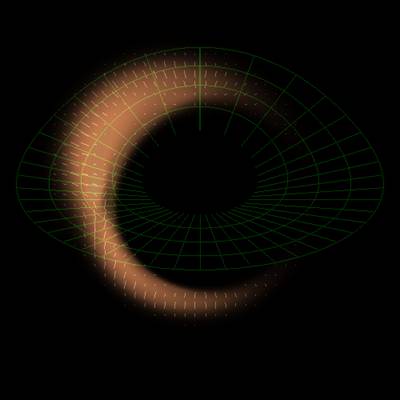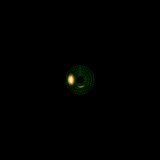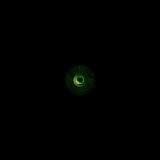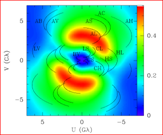

|
Home | Research | Publications | In the News | Pictures |
Ongoing ResearchImaging Black Holes |
In the near future, sub-mm VLBI and near-infrared interferometry will provide angular resolution on the order of tens of microarcseconds! This is sufficient to image the silhouette of the super-massive black holes in the center of the Milky way and M87. We already know that the hot accreting gas isn’t uniform, indeed it flares on time scales of tens of minutes. Hence, with Avi Loeb, I have been investigating the possibility of using hot-spots in the accretion flow to test the theory of general relativity in a regime where gravity diverges strongly from the Newtonian theory.We have found that it appears to be possible to measure the mass (M) and spin (a) of a black hole using the information from the imaging of such a hot-spot, along with it’s polarization and its polarized and unpolarized light curves. Since hot-spots wouldn’t be expected to develop at a single radius, this provides a way to measure M and a as function of radius. If the Kerr space-time is a good description of reality these had better be constant!Following this realization, I have been involved in attempts to verify the hot-spot model for Sgr A*’s flares. This has taken a variety of forms including looking carefully at the motion of Sgr A* during flares (with Mark Reid, Mareki Honma & Andreas Brunthaler) and predicting the short-timescale variations in the so-called closure quantities arising in VLBI experiments (with Shep Doeleman and Vincent Fish).Recently, Doeleman et al. have successfully detected the radio source coincident with the Milky Way’s supermassive black hole, Sgr A*, on Earth-scale baselines at 1.3mm. These ground-breaking observations not only demonstrate that millimeter and sub-millimeter VLBI is possible, but are already producing interesting constraints upon the magnitude and orientation of Sgr A*’s spin. With Shep Doeleman, Vincent Fish and Avi Loeb, I have been studying the constraints that can be placed upon the spin. In addition, we have determined which baselines are critical to further constrain the accretion flow models.Due to its enormous mass, M87 presents an alternative target for mm-VLBI capabilities, despite being thousands of times further away than Galactic black holes. However, unlike Sgr A*, M87 has a powerful jet. Thus, Avi Loeb and I have recently shown that observations of M87 promise to inform jet-formation theory as much as General Relativity. Careful comparison of M87 and Sgr A* will allow us to identify the role of the black hole, and its characteristics, in the production of these ultra-relativistic outflows. |
|
A hot-spot orbiting a non-rotating black hole. The green grid shows the equatorial plane. |
|
A hot-spot orbiting a rotating black hole (a=0.95M). The green grid shows the equatorial plane. |

|
Imaging BHs | The Nature of BHs | WD-CO Binaries | GRBs | Star Formation | Polarized RT | Magnetized NSs | Rotation Measures |




|
Left: An image of a thick disk around a moderately rotating black hole as seen from an oblique angle. Right: The associated visibilities with the positions of the recent measurements marked. |

|
The regions in the u-v plane (corresponding to the baselines between mm-telescopes) with the largest ability to distinguish between the accretion-flow models of Sgr A* that fit the existing mm-VLBI observations. |



|
The marginalized probability distribution for the magnitude (left), inclination (center) and position angle (right) of the black hole spin in Sgr A*, as determined by fitting the recent mm-VLBI observations. The shaded regions show the 1-s (dark) and 2-s (light) limits. (Click to enlarge.) |




|
Images of jets appropriate for M87. Upper Left: Our canonical model (the bifurcated brightness distribution arises due to the relativistic motion of the jet). Upper Right: A jet around a non-spinning black hole. Lower Left: A slowly collimating jet. Lower Right: A rapidly collimating jet. In all cases the expected VLBI resolution is shown in the bottom left. (Click to enlarge.) |